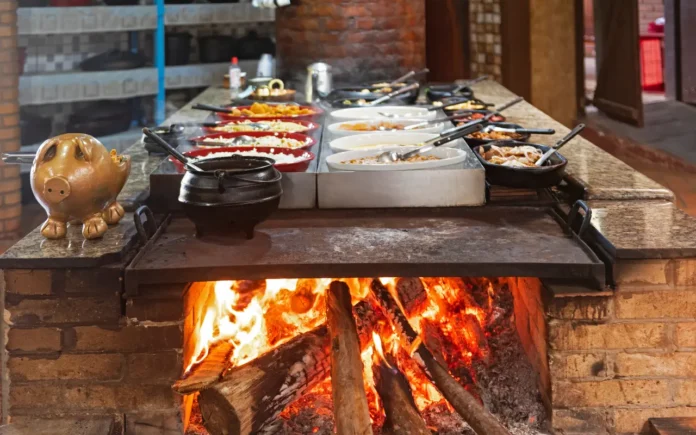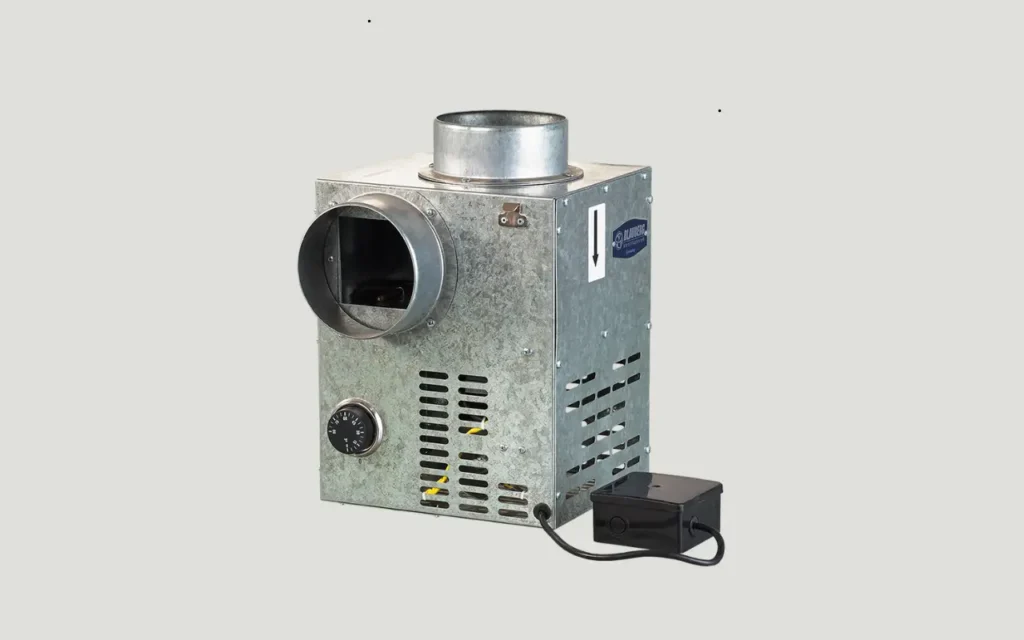
Fireplaces and wood-burning stoves are among the coziest and most efficient ways to heat a home. They create an atmosphere of coziness and warmth while also allowing for heating savings. However, behind the aesthetics and comfort, there are important technical nuances that affect safety.
What is the essence of the external air supply?
Fireplaces and wood stoves require a steady supply of oxygen to operate effectively. In its absence, combustion may become inefficient or even dangerous. If there is not enough air in the room, this will lead to oxygen deficiency, adversely impacting the combustion process and potentially causing carbon monoxide formation, a highly hazardous substance for health and life.
That’s why modern fans for wood stoves include external air supply systems. They bring in fresh air from outside, bypassing the living space, which is particularly crucial for energy-efficient homes with sealed windows and doors.
Blauberg is a symbol of quality and innovation in the ventilation industry. The company offers a broad selection of fans, certified and tested to meet high-quality standards. Be sure to visit their website for detailed product information.

How does this relate to safety?
Safety is perhaps the main reason why proper ventilation for fireplaces and stoves is critical. Lack of oxygen may trigger several serious problems:
- Carbon monoxide formation. Combustion becomes incomplete with insufficient oxygen levels, leading to carbon monoxide formation. This gas is invisible and has no smell, yet it poses significant hazards, especially if it accumulates in closed spaces.
- Fire hazard. Poor ventilation often results in excessive creosote buildup in chimneys and flues, increasing the risk of fires.
- Health issues. Low oxygen levels in the room can cause headaches, weakness, dizziness, and even more serious respiratory problems.
The solution to these problems is proper ventilation. By integrating a reliable external air supply system, homeowners can maintain indoor air quality, improve heating efficiency, as well as reduce health and fire risks.
What indicates a problem?
Several signs may indicate that the room where the fireplace or wood stove is located is not getting enough outside air:
- decreased device power – the fire burns weakly or unevenly, and it becomes difficult to maintain a steady flame;
- smoke entering the room – when smoke fills the room instead of going up the chimney, it means there’s a problem with the draft, likely caused by air deficiency;
- soot buildup on glass or walls – incomplete combustion often results in increased soot and creosote deposits;
- strong odors or stale air – a lack of fresh air can lead to unpleasant odors and overall poor air quality;
- condensation on windows – high humidity levels also signal inadequate ventilation.
If you notice at least one of these signs, it is recommended to check ventilation immediately and, if necessary, install a new tested fan to ensure safe and efficient operation of the heating equipment.
FURTHER READING









